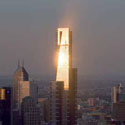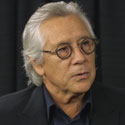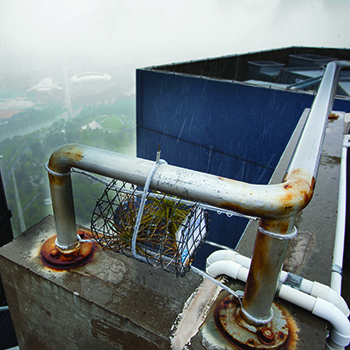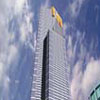Filter by
You must be a CTBUH Member to view this resource.
Eureka Tower
Building
Completed, 2006
3006
residential
concrete
297.3 m / 975 ft
91
1
556
850
13
9 m/s
123,000 m² / 1,323,961 ft²
You must be a CTBUH Member to view this resource.
You must be a CTBUH Member to view this resource.
Usually involved in the front end design, with a "typical" condition being that of a leadership role through either Schematic Design or Design Development, and then a monitoring role through the CD and CA phases.
The Design Engineer is usually involved in the front end design, typically taking the leadership role in the Schematic Design and Design Development, and then a monitoring role through the CD and CA phases.
The Design Engineer is usually involved in the front end design, typically taking the leadership role in the Schematic Design and Design Development, and then a monitoring role through the CD and CA phases.
Other Consultant refers to other organizations which provided significant consultation services for a building project (e.g. wind consultants, environmental consultants, fire and life safety consultants, etc).
These are firms that consult on the design of a building's façade. May often be referred to as "Cladding," "Envelope," "Exterior Wall," or "Curtain Wall" Consultant, however, for consistency CTBUH uses the term "Façade Consultant" exclusively.
Material Supplier refers to organizations which supplied significant systems/materials for a building project (e.g. elevator suppliers, facade suppliers, etc).
You must be a CTBUH Member to view this resource.
Usually involved in the front end design, with a "typical" condition being that of a leadership role through either Schematic Design or Design Development, and then a monitoring role through the CD and CA phases.
The Design Engineer is usually involved in the front end design, typically taking the leadership role in the Schematic Design and Design Development, and then a monitoring role through the CD and CA phases.
The Design Engineer is usually involved in the front end design, typically taking the leadership role in the Schematic Design and Design Development, and then a monitoring role through the CD and CA phases.
The CTBUH lists a project manager when a specific firm has been commissioned to oversee this aspect of a tall building’s design/construction. When the project management efforts are handled by the developer, main contract, or architect, this field will be omitted.
The main contractor is the supervisory contractor of all construction work on a project, management of sub-contractors and vendors, etc. May be referred to as "Construction Manager," however, for consistency CTBUH uses the term "Main Contractor" exclusively.
Other Consultant refers to other organizations which provided significant consultation services for a building project (e.g. wind consultants, environmental consultants, fire and life safety consultants, etc).
These are firms that consult on the design of a building's façade. May often be referred to as "Cladding," "Envelope," "Exterior Wall," or "Curtain Wall" Consultant, however, for consistency CTBUH uses the term "Façade Consultant" exclusively.
Material Supplier refers to organizations which supplied significant systems/materials for a building project (e.g. elevator suppliers, facade suppliers, etc).
CTBUH Study Examines Tallest Buildings with Dampers
22 August 2018 - CTBUH Research
Executive Director Visits Sydney and Melbourne
6 March 2017 - Event

31 October 2017 | Melbourne
Karl Fender of Fender Katsalidis Architects is interviewed by Chris Bentley during the 2017 CTBUH Australia Conference.

26 October 2015
Karl Fender, Fender Katsalidis
Tall buildings can amplify the positive physical and symbolic impact on a city. Fender Katsalidis has been at the forefront of high-density, high-rise residential buildings...

31 October 2017 | Melbourne
Karl Fender of Fender Katsalidis Architects is interviewed by Chris Bentley during the 2017 CTBUH Australia Conference.

27 October 2015 | Melbourne
Karl Fender of Fender Katsalidis Architects is interviewed by Chris Bentley during the 2015 CTBUH New York Conference at the Grand Hyatt New York. Karl...

10 October 2011 | Melbourne
By using project examples such as the Qatar National Bank (510 metres), Eureka Tower, Australia (300 metres) and others, the nexus between structural engineering and...

03 March 2008 | Melbourne
Tall Buildings Sustainability from the Bottom Up
Micheal Beaven of Arup, presented his examination of the idea that a building can only be sustainable if it is so in the context of...

26 October 2015
Tall buildings can amplify the positive physical and symbolic impact on a city. Fender Katsalidis has been at the forefront of high-density, high-rise residential buildings...

24 August 2015
A “Flight Manual” for Air Plants
The green fabric that clothes the earth is fraying. Sadly, through overuse, the garment we depend upon is wearing out. The construction of buildings and...

16 October 2007
Advances in the Structural Design of High-Rise Residential Buildings in Australia
This paper examines developments in the structural design of high rise concrete residential buildings in Australia’s two major cities, Sydney and Melbourne. Reference is made...

31 December 2006
Tallest Buildings Completed in 2006
Nina Tower 1 in Hong Kong, at 319 meters high, leads the list of the ten tallest buildings completed in 2006. The Sports City Tower/Aspire...

26 February 2001
Tall Building Design Innovations in Australia
This paper describes three examples of innovative tall building designs undertaken by the authors' firm in Australasia. These involve the design of building structures up...
22 August 2018
CTBUH has released a Tall Buildings in Numbers (TBIN) interactive data study on the world's tallest buildings with dampers.
10 March 2017
CTBUH Executive Director Antony Wood traveled to Sydney and Melbourne to build support for the 2017 conference through meetings and lectures.
31 July 2013
Close to 70 people attended the meeting where CTBUH representatives from Melbourne presented on the history and mission of the CTBUH, and plans for upcoming events.
31 December 2006
Nina Tower 1 in Hong Kong, at 319 meters high, leads the list of the ten tallest buildings completed in 2006. The Sports City Tower/Aspire Tower (Doha, United Arab Emirates) at 300 meters, and Eureka Tower (Melbourne, Australia), at 296 meters, were second and third, respectively.
Subscribe below to receive periodic updates from CTBUH on the latest Tall Building and Urban news and CTBUH initiatives, including our monthly newsletter. Fields with a red asterisk (*) next to them are required.
View our privacy policy